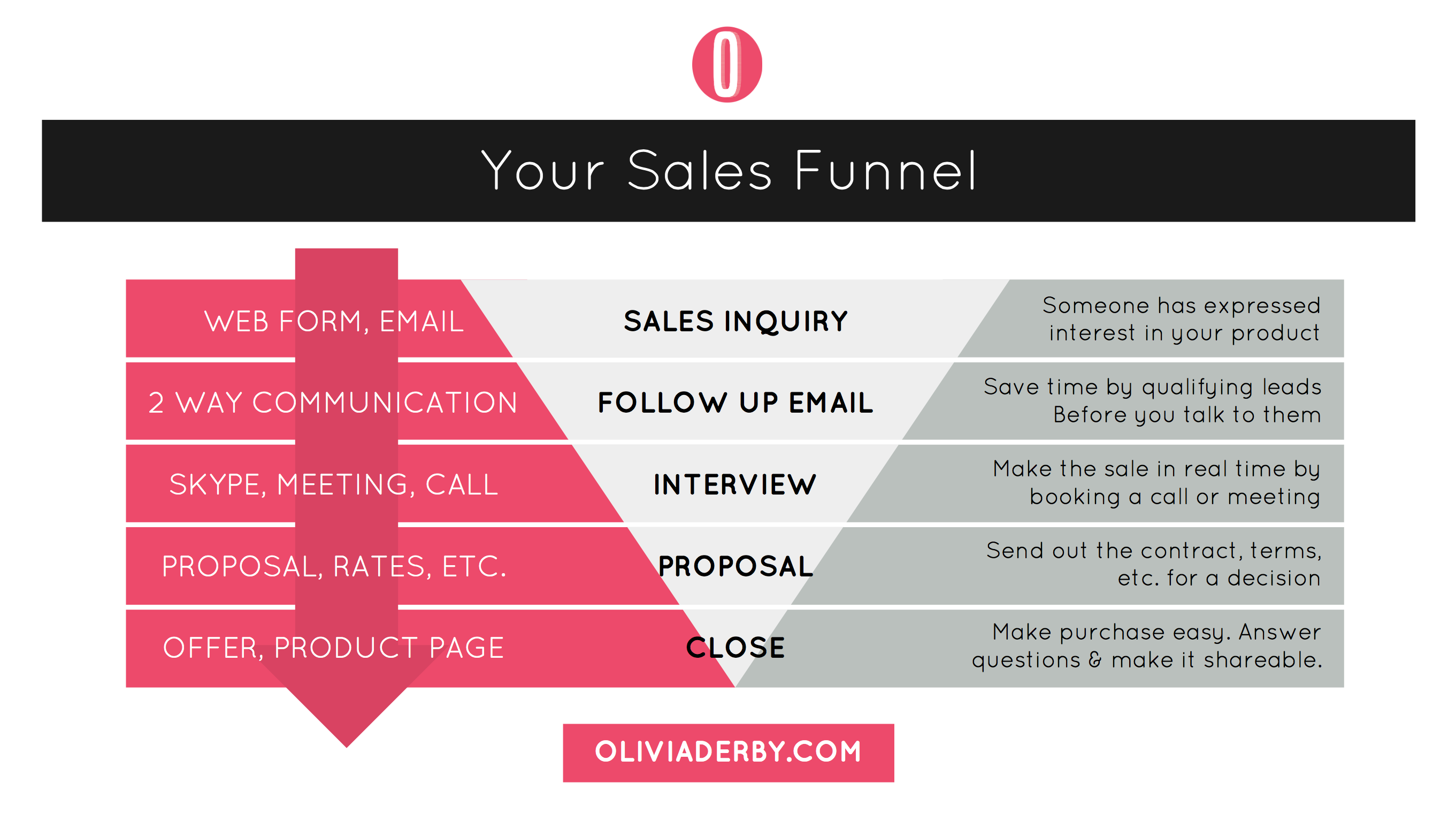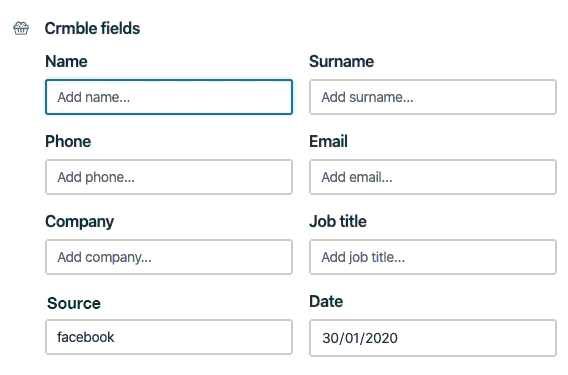I feel pretty confident in announcing that I’ve tried all the sales CRM (Customer Relationship Management) tools out there. At least most of them.
Because I run a dynamic business, I am sometimes selling services, sometimes selling products, and sometimes I’m not selling anything at all and just need to manage relationships with potential customers or clients. Like any member of a sales team, I need a tool to help me keep it all straight.
The problem with many tools I’ve tried is that they work really well for one area of the sales funnel, but are cumbersome for anything outside of that one process. I’ve been using Trello to manage my workflows and leads and without even realizing it, one of my boards evolved into a really powerful sales funnel manager.

What started as a simple list to track follow-up emails grew into a visual and easy-to-use method of tracking new leads through the sales pipeline. Unlike many of the more dedicated sales programs, Trello streamlines the information required for each new lead and lets me create and update contacts fast… like, lightning-fast.
Managing Your Sales Funnel 101
It’s one thing to generate leads, but it’s a whole other ball game to know how to manage them. In order to set up a successful sales funnel management system for your business, you need to understand where your leads are coming from, and where a planned system can be most useful within your sales funnel.
You might already have a sales funnel management system in place for your content, which probably looks a little like this:

This sales funnel is geared towards guiding prospects from zero awareness of your business all the way through a completed purchase. And while a funnel like this is great for helping you design content that supports your sales process, it’s a bit oversimplified for tracking the reality of making a sale.
If a prospect fills out a contact request form on your site, or if you initiate a 1-on-1 conversation with them (right around the “Engage” stage), your actual sales funnel expands beyond what is shown above.
The ‘Engage’ stage and the ‘Close’ stage develop into an entire funnel of their own. That funnel looks a little more like this:

Before a sale can be closed, most businesses require paperwork to be signed, questions to be asked, and logistics to be managed by a salesperson or sales team.
This is where an awesome system for tracking the process comes in. Why?
Consistent and well-timed follow-up usually means a single salesperson can dramatically improve close rates with little or no additional time investment.
Your own sales funnel will have stages that are unique to your product or service, so take the time to figure out what exactly each of your stages entails, what a salesperson will do during that phase, how exactly the communication will be executed, and what the next steps are.
What I love most about Trello is the fluid nature of the platform, which can grow and change as your sales process evolves.
Now let’s build this thing!
How To Set Up A Sales Funnel In Trello
I’ve set up my Trello board to reflect my own content and sales funnel so that I can view the stages of the sales funnel, where each potential customer falls, and necessary next steps.
The idea is that people enter my sales funnel when they make an inquiry on my website (a process which is automated and will be covered in a minute), and move from left to right through the various stages as they get closer and closer to a sale. You should take some time to personalize yours as well.
Design Your Sales Funnel Board
Get started by either clicking the plus sign in the top left corner, or clicking the “Boards” button on the top left of the window and choosing “Create new board.” Mine is called “Sales Funnel”.
Or, you can choose one from the pre-made Trello Templates for Sales Teams.
Now that you have a shiny new board, it’s time to get to the fun part—the lists.
Your lists will become the stages of your sales pipeline and should represent your unique selling process.
Recommended Sales Funnel Stage Lists:
- Contacted Us
- Leads
- Contacted
- Meeting Scheduled
- Proposal Delivered
- Won
- Contact Again
- Lost
As new leads come in, place them accordingly in each list as they move through the pipeline. As lines of communication evolve into relationships and potential deals, you can easily see which step in the process each lead falls.

How A Trello Board Can Help You Convert Leads And Drive Revenue
Most of the other CRM tools out there track sales by either following a specific deal or a specific person through the funnel.
The cards in this setup can track both, but I would suggest you pick one or the other and stick with it for all the cards on the board.
I find that tracking solely by deals is a little too abstract for me, and instead, opt to focus more on the person I’m speaking with. Each card is a new business relationship I am developing, and includes any relevant information that I would need to reference:
First, the card title includes the prospect’s name and a note about which product they are interested in.
The description starts by including contact information, and as the conversation develops and a sale becomes clearer, so does the card’s description. Continue adding top-level deal details like the specific product that person is drawn to, the dates they want to start, any limitations or concerns they have, the cost being discussed, and anything else that would work to shape the sale.
As the relationship develops, the card grows.
Updates and emails are added through comments and each card becomes a comprehensive timeline of the relationship.
Trello for Sales Teams

From nurturing leads to closing deals, see how Trello is
a win for your Sales Team.
Elevate Your Sales Funnel With Trello Features
The biggest boost for your Trello sales funnel comes from the Power-Ups and features available for each card.
1. Stay Consistent with Crmble
With the Crmble Power-Up, you can enjoy a built-in CRM tool to fuel your sales funnel.
Get instant access to your customers’ contact details thanks to “Crmble fields”—a key feature that helps you stay organized and provides consistent data collection on your leads.

Check at a glance how your sales pipeline is performing. Crmble Fields data combined with continuous lead position tracking gives you real time reports with valuable insights of your board activity.

2. Use Labels To Designate Pipeline Activities
Use a color-coded label to note contacts that require follow-up and contacts that you are waiting on. Looking at your sales flow, a color-coded system lets you quickly see who is waiting to hear from you and who you should be pinging again.
3. Be Prompt With Calendar And Advanced Checklists
Use the due date function to assign dates to follow up tasks for each deal. If a lead has complex requests that need additional subtasks, use Advanced Checklists to assign due dates to checklist items.
Be sure to enable the Calendar Power-Up to see your monthly tasks at a glance, including Advanced Checklist due dates (don’t worry, they’re differentiated within Calendar View).
If you have a team helping to close a deal, then you can assign each person their specific tasks so everyone stays accountable.
4. Organize Quickly With Email-To-Board
My favorite add-on, by far, is the email-to-board function. I’m all about automation and this makes it easy to keep your Trello board updated right from your email account. Each card has an email address that you can forward or send content to.
Forward any relevant emails for the sale to the address, and the card will get automatically updated with a comment containing the email’s contents.
Every single Trello board has a unique email address that allows you to create new Trello cards by sending or forwarding emails to that address. You can even select the list and position you would like those new cards to be created on.
Newly created cards use the email subject line for the card name, the body of the email in the card’s description, and add any attachments to the card.
Here’s how to set it up:
- In a board’s menu click “More..” and then click “Email-to-board Settings”
- Select the list and position for new cards to be created on
- Copy your unique email address and test it out by sending an email to the address


5. Automate Your Sales Funnel With Butler
Have I mentioned I’m a big fan of automation? If you want a seamless system in place that never misses a lead, you need to find a great way of getting inquiries from your email directly into Trello without relying on you to manually create a card.
Trello’s Butler is a tool that does just this.
With Butler, you can create thousands of automation rules to simplify your sales funnel management system even further.
I use a Butler rule to grab emails that land in my Gmail inbox and have been labeled “Inquiry” by a filter. The rule automatically creates a card in my “Inquiry” list for that connection. Magic!
Generate, Engage, Nurture, Sell, Repeat
Your sales process changes and evolves with every potential customer. A successful sales funnel means that you’ll always keep sales opportunities in view and nurture new and existing leads thanks to great organization and process.
By using Trello to build a dynamic tracking system, your team can easily nurture new leads, build relationships, view the next steps, and convert potential prospects into loyal customer champions.
Editor’s Note: This article was originally published in July 2016 and we’ve added a whole heap of new ideas and nuggets of information to this post in July 2020.
Good or bad, we’d love to hear your thoughts. Find us on Twitter (@trello)

